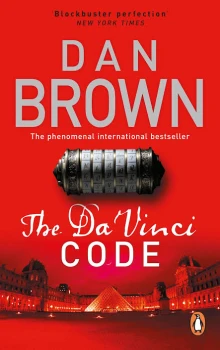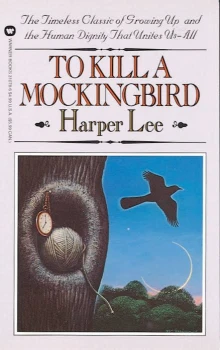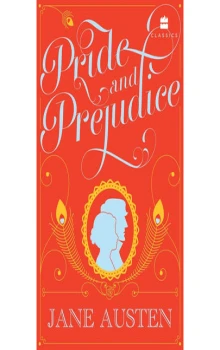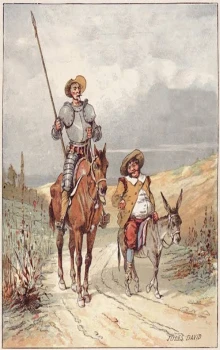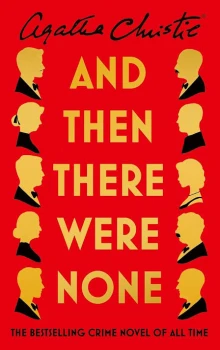The crisp April air whipped through the open window of the Citroën ZX as it skimmed
south past the Opera House and crossed Place Vendôme. In the passenger seat, Robert
Langdon felt the city tear past him as he tried to clear his thoughts. His quick shower and
shave had left him looking reasonably presentable but had done little to ease his anxiety.
The frightening image of the curator's body remained locked in his mind.
Jacques Saunière is dead.
Langdon could not help but feel a deep sense of loss at the curator's death. Despite
Saunière's reputation for being reclusive, his recognition for dedication to the arts made
him an easy man to revere. His books on the secret codes hidden in the paintings of
Poussin and Teniers were some of Langdon's favorite classroom texts. Tonight's meeting
had been one Langdon was very much looking forward to, and he was disappointed
when the curator had not shown.
Again the image of the curator's body flashed in his mind. Jacques Saunière did that to
himself? Langdon turned and looked out the window, forcing the picture from his mind.
Outside, the city was just now winding down—street vendors wheeling carts of
candied amandes, waiters carrying bags of garbage to the curb, a pair of late night lovers
cuddling to stay warm in a breeze scented with jasmine blossom. The Citroën navigated
the chaos with authority, its dissonant two-tone siren parting the traffic like a knife.
“Le capitaine was pleased to discover you were still in Paris tonight,” the agent said,
speaking for the first time since they'd left the hotel. “A fortunate coincidence.”
Langdon was feeling anything but fortunate, and coincidence was a concept he did not
entirely trust. As someone who had spent his life exploring the hidden interconnectivity
of disparate emblems and ideologies, Langdon viewed the world as a web of profoundly
intertwined histories and events. The connections may be invisible, he often preached to
his symbology classes at Harvard, but they are always there, buried just beneath the
surface.
“I assume,” Langdon said, “that the American University of Paris told you where I was
staying?”
The driver shook his head. “Interpol.”
Interpol, Langdon thought. Of course. He had forgotten that the seemingly innocuous
request of all European hotels to see a passport at check-in was more than a quaint
formality—it was the law. On any given night, all across Europe, Interpol officials could
pinpoint exactly who was sleeping where. Finding Langdon at the Ritz had probably
taken all of five seconds.
As the Citroën accelerated southward across the city, the illuminated profile of the
Eiffel Tower appeared, shooting skyward in the distance to the right. Seeing it, Langdon
thought of Vittoria, recalling their playful promise a year ago that every six months they
would meet again at a different romantic spot on the globe. The Eiffel Tower, Langdon
suspected, would have made their list. Sadly, he last kissed Vittoria in a noisy airport in
Rome more than a year ago.
“Did you mount her?” the agent asked, looking over.
Langdon glanced up, certain he had misunderstood. “I beg your pardon?”
“She is lovely, no?” The agent motioned through the windshield toward the Eiffel
Tower. “Have you mounted her?”
Langdon rolled his eyes. “No, I haven't climbed the tower.”
“She is the symbol of France. I think she is perfect.”
Langdon nodded absently. Symbologists often remarked that France—a country
renowned for machismo, womanizing, and diminutive insecure leaders like Napoleon
and Pepin the Short—could not have chosen a more apt national emblem than a
thousand-foot phallus.
When they reached the intersection at Rue de Rivoli, the traffic light was red, but the
Citroën didn't slow. The agent gunned the sedan across the junction and sped onto a
wooded section of Rue Castiglione, which served as the northern entrance to the famed
Tuileries Gardens—Paris's own version of Central Park. Most tourists mistranslated
Jardins des Tuileries as relating to the thousands of tulips that bloomed here, but Tuileries
was actually a literal reference to something far less romantic. This park had once been an
enormous, polluted excavation pit from which Parisian contractors mined clay to
manufacture the city's famous red roofing tiles—or tuiles.
As they entered the deserted park, the agent reached under the dash and turned off the
blaring siren. Langdon exhaled, savoring the sudden quiet. Outside the car, the pale wash
of halogen headlights skimmed over the crushed gravel parkway, the rugged whir of the
tires intoning a hypnotic rhythm. Langdon had always considered the Tuileries to be
sacred ground. These were the gardens in which Claude Monet had experimented with
form and color, and literally inspired the birth of the Impressionist movement. Tonight,
however, this place held a strange aura of foreboding.
The Citroën swerved left now, angling west down the park's central boulevard. Curling
around a circular pond, the driver cut across a desolate avenue out into a wide quadrangle
beyond. Langdon could now see the end of the Tuileries Gardens, marked by a giant
stone archway.
Arc du Carrousel.
Despite the orgiastic rituals once held at the Arc du Carrousel, art aficionados revered
this place for another reason entirely. From the esplanade at the end of the Tuileries, four
of the finest art museums in the world could be seen . . . one at each point of the
compass.
Out the right-hand window, south across the Seine and Quai Voltaire, Langdon could
see the dramatically lit facade of the old train station—now the esteemed Musée d'Orsay.
Glancing left, he could make out the top of the ultramodern Pompidou Center, which
housed the Museum of Modern Art. Behind him to the west, Langdon knew the ancient
obelisk of Ramses rose above the trees, marking the Musée du Jeu de Paume.
But it was straight ahead, to the east, through the archway, that Langdon could now see
the monolithic Renaissance palace that had become the most famous art museum in the
world.
Musée du Louvre.
Langdon felt a familiar tinge of wonder as his eyes made a futile attempt to absorb the
entire mass of the edifice. Across a staggeringly expansive plaza, the imposing facade of
the Louvre rose like a citadel against the Paris sky. Shaped like an enormous horseshoe,
the Louvre was the longest building in Europe, stretching farther than three Eiffel Towers
laid end to end. Not even the million square feet of open plaza between the museum
wings could challenge the majesty of the facade's breadth. Langdon had once walked the
Louvre's entire perimeter, an astonishing three-mile journey.
Despite the estimated five days it would take a visitor to properly appreciate the 65,300
pieces of art in this building, most tourists chose an abbreviated experience Langdon
referred to as “Louvre Lite”—a full sprint through the museum to see the three most
famous objects: the Mona Lisa, Venus de Milo, and Winged Victory. Art Buchwald had
once boasted he'd seen all three masterpieces in five minutes and fifty-six seconds.
The driver pulled out a handheld walkie-talkie and spoke in rapid-fire French.
“Monsieur Langdon est arrivé. Deux minutes.”
An indecipherable confirmation came crackling back.
The agent stowed the device, turning now to Langdon. “You will meet the capitaine at
the main entrance.”
The driver ignored the signs prohibiting auto traffic on the plaza, revved the engine,
and gunned the Citroën up over the curb. The Louvre's main entrance was visible now,
rising boldly in the distance, encircled by seven triangular pools from which spouted
illuminated fountains.
La Pyramide.
The new entrance to the Paris Louvre had become almost as famous as the museum
itself. The controversial, neomodern glass pyramid designed by Chinese-born American
architect I. M. Pei still evoked scorn from traditionalists who felt it destroyed the dignity
of the Renaissance courtyard. Goethe had described architecture as frozen music, and
Pei's critics described this pyramid as fingernails on a chalkboard. Progressive admirers,
though, hailed Pei's seventy-one-foot-tall transparent pyramid as a dazzling synergy of
ancient structure and modern method—a symbolic link between the old and new—
helping usher the Louvre into the next millennium.
“Do you like our pyramid?” the agent asked.
Langdon frowned. The French, it seemed, loved to ask Americans this. It was a loaded
question, of course. Admitting you liked the pyramid made you a tasteless American, and
expressing dislike was an insult to the French.
“Mitterrand was a bold man,” Langdon replied, splitting the difference. The late French
president who had commissioned the pyramid was said to have suffered from a “Pharaoh
complex.” Singlehandedly responsible for filling Paris with Egyptian obelisks, art, and
artifacts, François Mitterrand had an affinity for Egyptian culture that was so all-
consuming that the French still referred to him as the Sphinx.
“What is the captain's name?” Langdon asked, changing topics.
“Bezu Fache,” the driver said, approaching the pyramid's main entrance. “We call him
le Taureau.”
Langdon glanced over at him, wondering if every Frenchman had a mysterious animal
epithet. “You call your captain the Bull?”
The man arched his eyebrows. “Your French is better than you admit, Monsieur
Langdon.”
My French stinks, Langdon thought, but my zodiac iconography is pretty good. Taurus
was always the bull. Astrology was a symbolic constant all over the world.
The agent pulled the car to a stop and pointed between two fountains to a large door in
the side of the pyramid. “There is the entrance. Good luck, monsieur.”
“You're not coming?”
“My orders are to leave you here. I have other business to attend to.”
Langdon heaved a sigh and climbed out. It's your circus.
The agent revved his engine and sped off.
As Langdon stood alone and watched the departing taillights, he realized he could
easily reconsider, exit the courtyard, grab a taxi, and head home to bed. Something told
him it was probably a lousy idea.
As he moved toward the mist of the fountains, Langdon had the uneasy sense he was
crossing an imaginary threshold into another world. The dreamlike quality of the evening
was settling around him again. Twenty minutes ago he had been asleep in his hotel room.
Now he was standing in front of a transparent pyramid built by the Sphinx, waiting for a
policeman they called the Bull.
I'm trapped in a Salvador Dalí painting, he thought.
Langdon strode to the main entrance—an enormous revolving door. The foyer beyond
was dimly lit and deserted.
Do I knock?
Langdon wondered if any of Harvard's revered Egyptologists had ever knocked on the
front door of a pyramid and expected an answer. He raised his hand to bang on the glass,
but out of the darkness below, a figure appeared, striding up the curving staircase. The
man was stocky and dark, almost Neanderthal, dressed in a dark double-breasted suit that
strained to cover his wide shoulders. He advanced with unmistakable authority on squat,
powerful legs. He was speaking on his cell phone but finished the call as he arrived. He
motioned for Langdon to enter.
“I am Bezu Fache,” he announced as Langdon pushed through the revolving door.
“Captain of the Central Directorate Judicial Police.” His tone was fitting—a guttural
rumble . . . like a gathering storm.
Langdon held out his hand to shake. “Robert Langdon.”
Fache's enormous palm wrapped around Langdon's with crushing force.
“I saw the photo,” Langdon said. “Your agent said Jacques Saunière himself did—”
“Mr. Langdon,” Fache's ebony eyes locked on. “What you see in the photo is only the
beginning of what Saunière did.”
